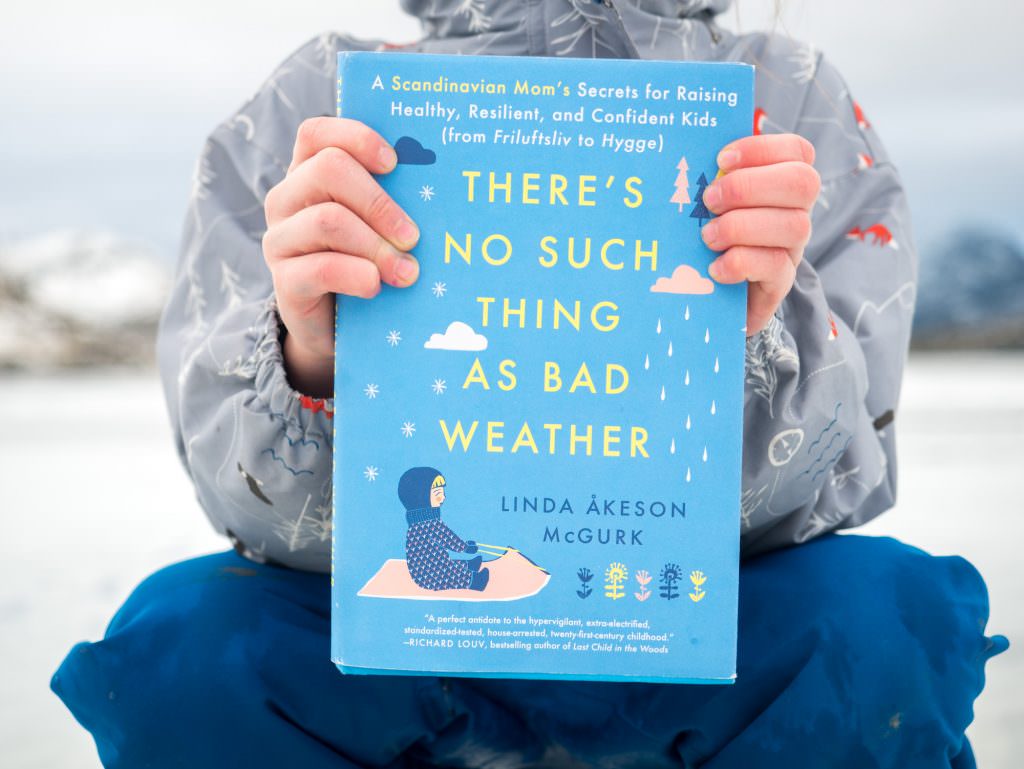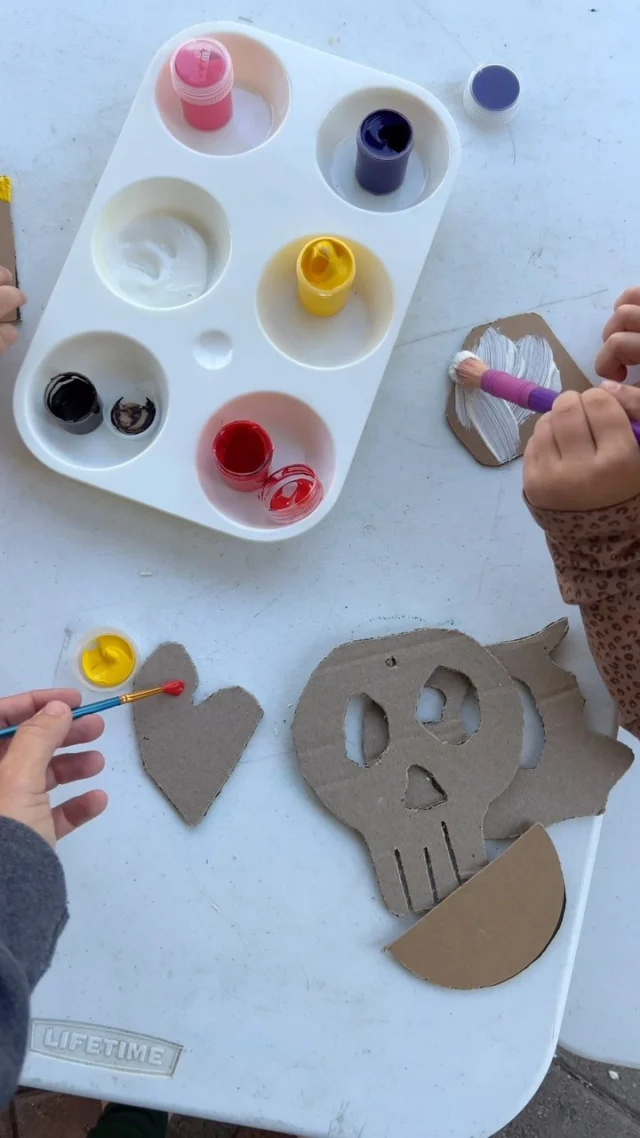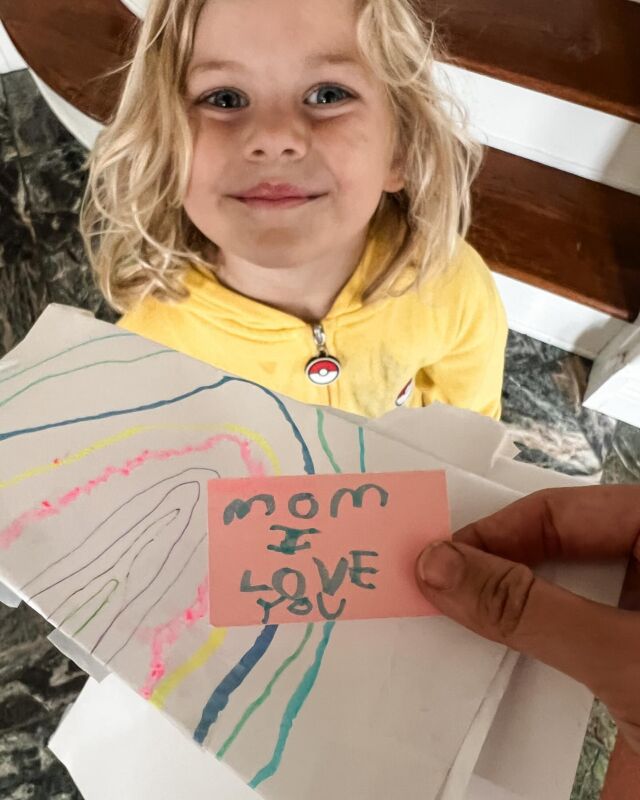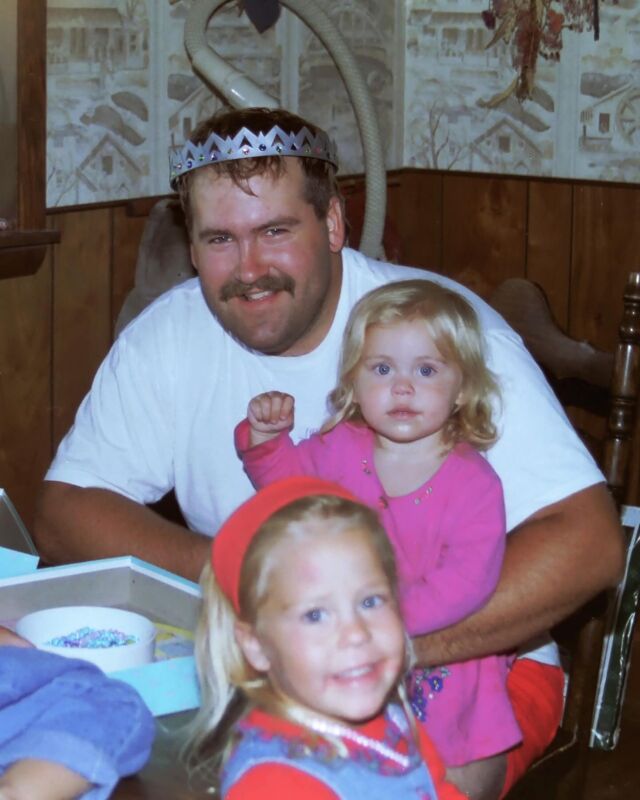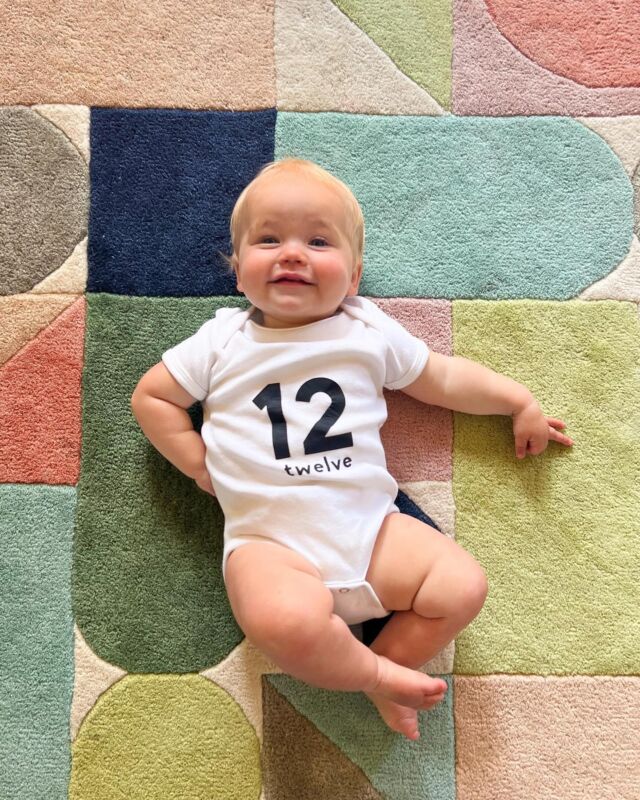I loved this book. I ironically read it the month after I moved away from the Midwest and moved to Southern California. I loved it because not only did it promote going outside with your children, but it talks about so much more and was part of the foundation of why I chose to homeschool my kindergartener.
Our attitudes about parenting are thoroughly steeped in cultural norms, and our children in a way become an extension of ourselves.
Cold Weather and Health
It’s a misconception that cold temperatures make us sick. We get sick because we contract viruses and bacteria when we spend too much time inside, stand too close to each other on the subway, and so on.
In reality, our modern, sanitized lifestyle has wiped out a lot of beneficial microbes in our gut that help us stay healthy. Being exposed to certain microbes in the womb and early childhood can actually strengthen our immune systems and protect us from illnesses later on. When the immune system is not challenged enough, it might start looking for stuff to do, like overreacting to things that are not really dangerous, like pollen and peanuts.
Exposure to microbes is not the only way children can benefit from messy play in nature it’s also the ultimate sensory experience. Walking barefoot across a log, sinking your hands into a pile of mud, listening to the birds singing, and feeling raindrops land on your forehead are all stimulating to children’s senses this is important because good sensory integration — i.e., or ability to process and organize the information that we get through our senses — means that our body and brain are functioning at the optimal level.
But according to the Centers for Disease Control and Prevention the most dangerous place for a child to be is neither the playground nor the woods. It’s in a car, as motor vehicle accidents are the most common cause of death among the more than twelve thousand American children wilI die due to unintentional injury every year (followed by drowning the majority of the time in the family pool). Research also shows that three-quarters of all American parents worry that their children will get abducted, despite the fact that violent crime against children has been decreasing steadily since the 1990s and the risk of being kidnapped and killed by a stranger is so minimal—around 0.00007 percent, or one in I.4 million annually—that experts call it effectively zero. And in a vast majority of sex abuse cases against children, the perpetrator is somebody close to the victim- a family member, relative, or acquaintance and not a stranger off the street.
Ironically, in a time when our children are statistically safer and more secure than ever, removing all perceivable risk from their lives had become mainstream parenting strategy.
The Importance of Risk-Taking
They don’t learn how to assess risk.” she says about the ever-stricter safety regulations for playgrounds. “As a culture, we don’t trust our children at all–we basically live their lives for them. Up until age seven or eight they’re so bubble-wrapped and helicoptered that they don’t get to practice any of their physical skills, and now there’s huge fallout.
children who played unsupervised or had independent mobility are more physically active and have better social skills than their peers. Theyre also better at judging risk, which can help them later in life, when they’re no longer monitored by adults. Sandseter argues that the overall positive health effects of risky outdoor play are greater than those associated with avoiding it. She also notes that risky play makes children better able to master peril. When adults restrict children’s risky play, it hampers their ability to seek out the challenges and stimulation that they need for normal physical and mental development.
“I think they get better coordination from trying things and staying active. Even if they did break something, a broken bone heals quickly. The most dangerous thing of all is to sit still.
He is careful to point out that he does not advocate letting toddlers out willy-nilly without supervision. It’s all about taking baby steps, using good judgement, and practicing often
Outside, Play & Learning
Studies show that were more prone to remember events that engage our whole senses. Nature, it turns out, is just the right place for that.
Most of what children need to learn during their early childhood years cannot be taught; it’s discovered through play.
Ruth Wilson
“Well, we usually notice when the children become interested in writing and then we give them little notebooks that they can use. The idea is that it will come naturally when they’re ready for it. It’s a lot easier for them to learn when they have that intrinsic motivation.”
Piaget believed the learning Process was more important than the end product, and that children can learn problem solving skills only through active discovery. Vygotsky held that children’s cognitive development is heavily influenced by their culture and what they learn primarily by playing und interacting with older and more skilled children and adults.
“There are certain parts of the brain that are stimulated when we move around and have fun in a varied environment. We turn to our intuition when we go outside — and we need to do it more often.”
Independence, resilience, and self-esteem are highly coveted qualities in children in Scandinavia. Unlike academic facts, these qualities can’t be taught; they must be learned through first-hand experience over time.
A Case for Creativity
Those baby flash cards and the word walls so often seen in preschool classrooms may seem harmless enough, but putting pressure on young children to read early can actually limit other aspects of their learning that may be more important, like spontaneous exploration and discovery. Testing creativity and problem-solving skills is arguably harder than testing factual knowledge, but the results of two separate studies conducted by MIT and the University of California, Berkeley, show that teaching children too much too early can backfire. At MIT, the researchers gave a group of four-year-olds exactly the same toy, and only varied the method with which they introduced it to the children. In one group, the researcher acted naive and clueless when she demonstrated one of the functions of the toy, whereas the other group was given direct instruction by the researcher on how to use it. When left alone with the toy, all the children in the study were able to replicate what the “teacher” had done-pull on one of the toy’s tubes to make it squeak- but the children in the fist group played with the toy longer and discovered more of its functions. They were simply more curious and more likely to discover new information than the children who had been told what by the teacher how yo use the toy.
Happy Childhood
“We see childhood as an important part of a human’s life and not as a race to adulthood. We believe and respect the fact that children have the right to a happy childhood.”
Wonder
Instead, she thinks education in the early years should focus on supporting children’s curiosity and sense of wonder, and getting them excited about the world around them. As luck would have it, there is a perfect place for this: nature.
I wanted to make sure I had done everything in my power to preserve her sense of wonder- that amazing feeling of curiosity and boundless possibility that we’re all born with–and keep her feet firmly rooted in the humus-clad forest floor in our backyard.
Competent Child
Anette Eskilsson, a Swedish early childhood educator who often speaks about stimulating children’s desire to learn, explains the Scandinavian attitude toward play and learning this way: “It’s two completely different ways of looking at it. You either view children as empty containers, waiting to be filled by adults through teaching, or you believe that they have the innate capability to learn together with others. In Sweden we have faith in the child’s own curiosity and desire to learn. We call this concept the competent child.”
Freedom with Responsibility
Many parents live by the notion that children need a certain amount of freedom – both freedom of movement and freedom to take reasonable risks for plane — in order to become independent, confident human beings. In Sweden, parents logically call this “freedom with responsibility“.
Independent and trusting in their own abilities. You can tell that they have a good grasp on their own ability because they don’t get themselves into situations that they can’t handle.
Intervene only when it’s absolutely necessary. They trust their children to be able to do and try new things and give them space to build their own trust of themselves.
Match Screen Time with Green Time
She couldn’t write a book about going outside in today’s world without mentioning screens.
We don’t let them sit by themselves with it and we don’t use it to comfort them if they’re upset, but we do sometimes them play an educational game together.
Our Backyard
When it comes to our home, I want to create a flourishing environment of creativity, boundless play, and safe risk-taking. At the moment, I believe I have done so and we have more great ideas in the making!
By no means is our backyard a show piece; it’s an environment designed to meet the needs of our child, not our aesthetic. We’ve found that there is much more joy in watching the formation of a human.


